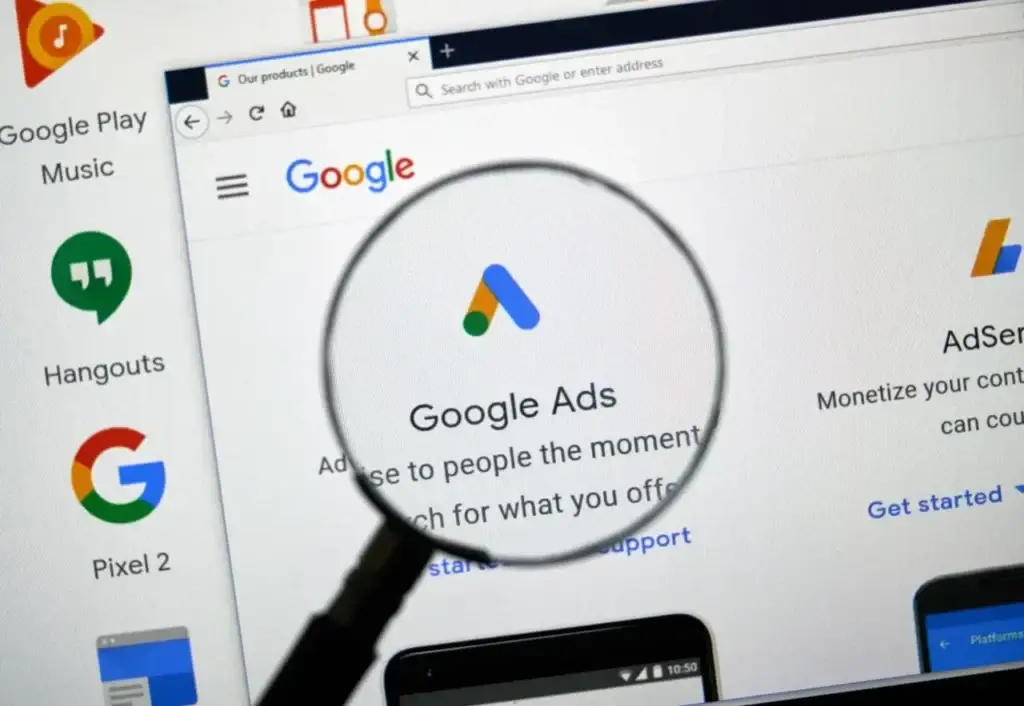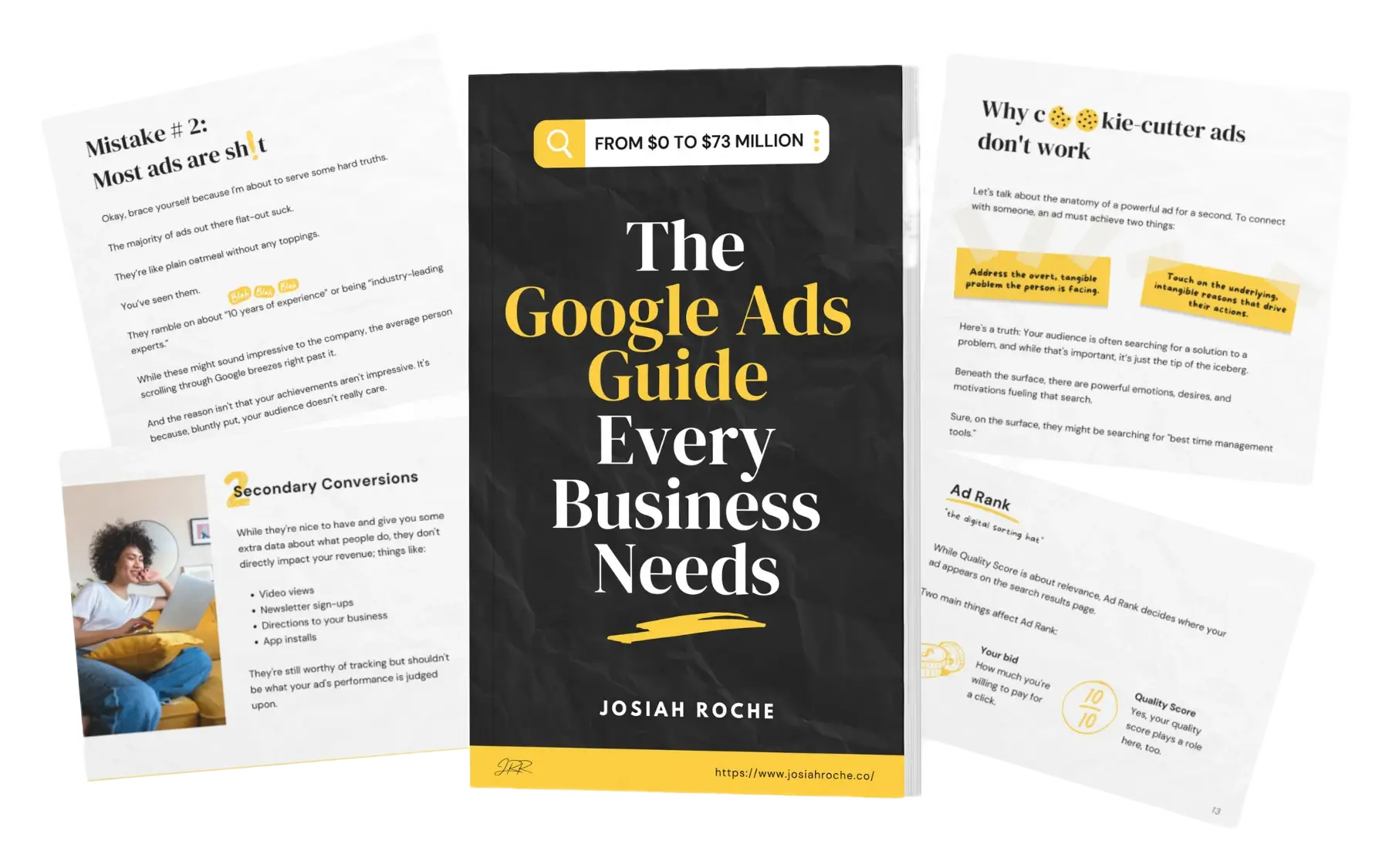If you’re wondering how to do a Google Ads audit, you’ve come to the right place.
In this cutthroat world of online advertising, “just winging it” is a one-way ticket to wasting your hard-earned money… or that of your clients.
The worst part? Missing out on potential customers.
You see, conducting a Google Ads audit can improve your conversions, which means more sales.
If you’re not regularly checking up on how your Google Ads are doing, you might fall behind your competition.
So, get ready and pay attention.
I will reveal the 9 crucial things you can’t afford to miss in your Google Ads audit.
#1 — Restructuring your Google Ads account

Source: Scholar Journeys
You’re probably thinking, “Why fix something that ain’t broke?”
Well, your account might be chugging along, but let’s aim for thriving, not just surviving.
We want your ads not just to make noise, but to make music.
A symphony of clicks and conversions, if you will.
Why should you bother?
You see, your Google Ads campaigns are like the departments of a store.
Picture yourself walking into a giant retail place, but instead of clothes neatly arranged by type and season, you find socks next to sunscreen.
Chaos, right?
Same goes for your Google Ads account.
If it’s not organised, you’re the vendor selling woolen sweaters in the desert.
Get that makeover going
So, you’ve got a mess. What do you do?
No, you don’t need to hire Marie Kondo, but you do need to tidy up.
- Purpose-driven campaigns: First things first, your campaigns need a clear-cut purpose. Think laser-focused, not shotgun spread. Maybe one campaign aims at selling your bestsellers, and another focuses on customer retention. You get the idea.
- Ad groups and keywords, the dynamic duo: Ad groups should be thematic collections of closely-related keywords. So, if your business is all about pet care, an ad group could focus solely on dog food, another on grooming products. That way, you’re hitting the bullseye, not just throwing darts in the dark.
- Audit your landing pages: This is non-negotiable. If your keyword is “vegan chocolate,” your landing page better not showcase dairy milk bars. If it does, you’re just setting yourself up for disappointment. And in the world of marketing, disappointment translates to lost clicks and conversions.
Finally, don’t be afraid to delete
If you find obsolete ad groups or keywords, trash them.
No second thoughts.
Keeping them is like hoarding expired milk in the fridge.
It’s not getting better; it’s just taking up space.
So, don’t let a cluttered Google Ads account be your downfall.
Start tidying up and turn that account into a well-oiled machine.
After all, in this bustling marketplace, the sharpest advertisers win.
And trust me, you want to be sharp.
- Review existing ad groups and keywords: Take a hard look. Anything irrelevant or underperforming? Ax it.
- Thematic grouping: Classify your remaining keywords into focused ad groups. You know, like how you’d separate your forks from your spoons.
- Landing page check: Ensure your landing pages align with your ad group themes. Misalignment here is like inviting someone to a rock concert and then playing country music. Just doesn’t click, does it?
So, there you have it. Restructuring your Google Ads account isn’t about reinventing the wheel.
It’s about making sure the wheel you have is perfectly round, balanced, and ready to roll.
Ignore this, and you’re cooking up a perfect storm of inefficiency and wasted budget. And trust me, that’s a recipe nobody wants to try.
#2 — Optimise your ad groups and ads
Now, let’s switch gears a bit.
You’ve restructured your Google Ads account like a pro organiser. Next up?
Sharpening the blades of your ad groups and ads.
Think of this as the haute couture of your marketing strategy. Off-the-rack just won’t cut it.
Anatomy of a high-impact ad
What separates a compelling ad from a forgettable one? Let’s dissect.
- Killer headlines: No, we’re not talking about tabloids. Your headline needs to be both captivating and relevant. Your audience should know at a glance what you’re offering. If you sell eco-friendly sneakers, “Eco-Friendly Sneaks” could be a headline that walks the talk by using DKI. I recommend spending 70% of your time on the headlines.
- Punchy descriptions: The description is where you can add a bit of flair. But remember, you’ve got 90 characters across two lines. So, be clear about the benefits or features, and maybe even hint at what they’d miss out on. “Comfy, stylish, and Earth-loving. Walk the green path or miss out.”
- Clear CTAs: Your call-to-action is your closer. It’s that final push, the nudge that says, “Come on, click here; it’s worth your while.” Be direct, like “Shop Now,” or create urgency with “Limited Time Offer.” In my experience, “Learn more” is the best option.
Don’t fear the scissors
Editing is your friend. It’s not personal; it’s practical. If a word or phrase isn’t pulling its weight, chop it.
Ruthlessly.
Because each unnecessary word is a wasted opportunity to connect with your audience.
Measure, tweak, repeat
And don’t just set it and forget it.
The beauty of digital marketing is that it’s, well, digital.
Data is abundant, so make use of it.
Run A/B tests to figure out what’s resonating with your audience and what’s falling flat. Iterate and refine.
Optimising your ad groups and ads is not just about hacking away at irrelevant content; it’s also about fine-tuning the details that make your offers irresistible.
#3 — Analyse your keywords to improve campaign performance
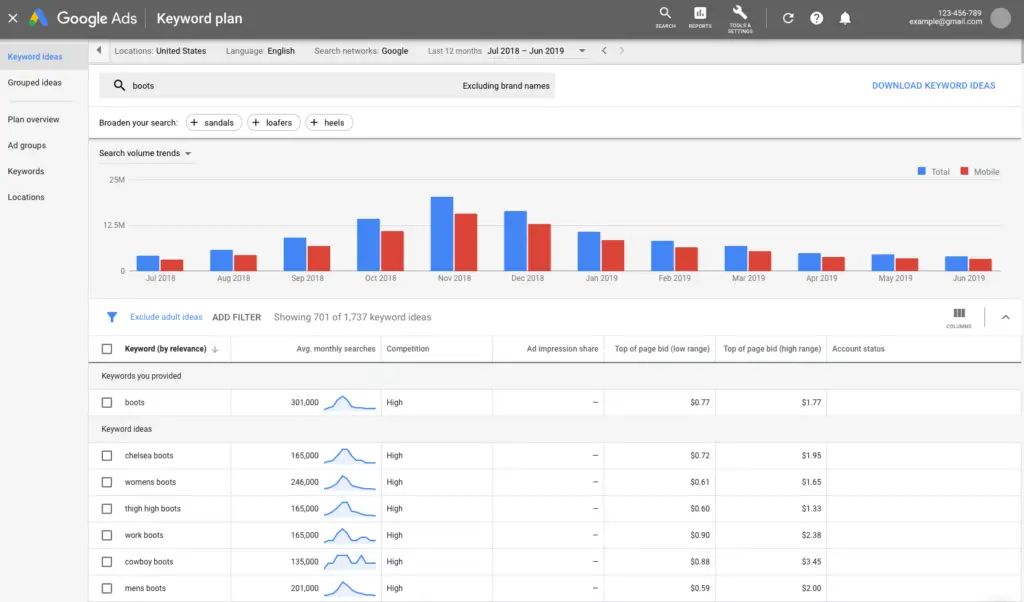
Source: Google Ads Help
Now, let’s have a little chat about your keywords.
You see, you can’t just let them run wild like a pack of untamed wolves.
You’ve got to leash them in and make sure they’re working for you, not against you.
That means taking a hard look at your keyword performance.
It’s important to understand the metrics that matter.
Look at your click-through rate (CTR), conversion rate, and cost-per-click (CPC).
These metrics will let you know which keywords are driving traffic to your website and which ones are falling flat.
For example, let’s say you’re running an ad campaign for your online clothing store.
You might find that your keyword, “summer dresses” is driving a lot of traffic and converting at a high rate.
On the other hand, your keyword, “men’s dress shoes” might have a high CPC and low conversion rate.
In this scenario, you would want to focus on optimising your keyword, “summer dresses”.
And then consider removing or refining your keyword, “men’s dress shoes”.
Aside from that, it’s also important to have a look at your industry benchmarks and set a benchmark goal for yourself.
Here’s an example of the average click-through rates by industry.

Source: CXL
The numbers can vary widely depending on your industry, competition, and campaign goals.
So, it’s important for you to set realistic benchmarks based on your specific situation.
Once you have your numbers, you can work on improving them over time.
Remember, keep an eye out for keywords that consistently deliver the goods.
And cut those that drain your budget without delivering results.
Now, let’s move away from numbers.
Do your keywords relate to your audience’s interests?
In Google Ads, clarity is your secret weapon.
Are the keywords laser-focused on your target audience?
Or are they trying to be everything to everyone?
The more tailored your keywords are to your target audience, the higher your chances of success.
For example, you might create an ad group for “summer dresses” to offer your customers a selection of clothes perfect for the warmer months.
This way, you’re making it easier for the right people to see you.
And that’s golden.
#4 — Get the most out of your targeting settings
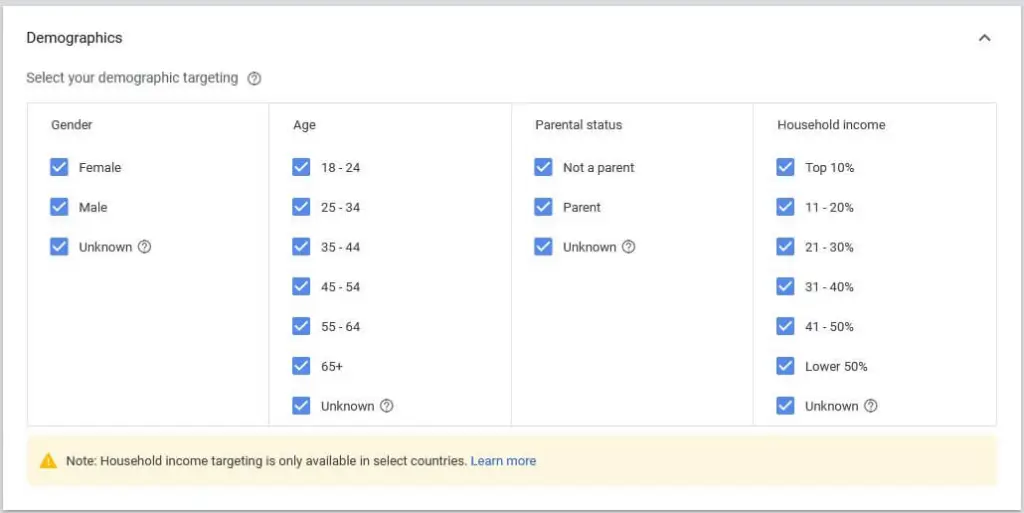
Source: MARKETIUM CLUB
Look, your Google Ads could be written by Shakespeare himself, but if they’re not reaching the right crowd, you’re just throwing money out the window.
Let’s deep-dive into your targeting settings to make sure you’re getting more bang for your buck.
Zeroing in on location targeting
Many businesses make the error of casting their nets too wide, like a fisherman aiming to catch a whale in a goldfish pond.
If you’re a local eatery, you don’t need to be the talk of the town three states over.
Stick to your locale, or you’ll be serving up ads to people who wouldn’t commute that far for the Last Supper.
Trust me, no one in Sydney is hopping on a plane to get plumbing work done in Perth.
The device dilemma
Gone are the days when everyone accessed the internet from their bulky desktops.
Now we have desktops, laptops, tablets, smartphones, smart-fridges, you name it.
Knowing which device your target audience uses can be the difference between a ‘meh’ and a ‘wow.’
Take mobile apps, for instance.
Naturally, you’d aim these at smartphone users.
No one’s trying to download a food delivery app on their desktop — that’s like wearing a raincoat indoors.
But, let’s say you’re selling a complicated project management tool.
Here, targeting desktops would make more sense. Why?
Because that’s where the heavy lifting usually happens in project management software.
Timing is everything: ad scheduling
Think about when your target audience would be most receptive or in need of what you’re offering.
For a restaurant, this could be lunch or dinner time.
People are hungry; they’re looking for options.
Serve them your ad like you’d serve your signature dish.
Hot and at the right time.
Meanwhile, if you’re in the B2B space offering something like accounting software, you’d aim for weekdays, during standard office hours.
That’s when people are most likely feeling the pressure of manual accounting and thinking, “There’s got to be a better way!”
By the way, all this isn’t just a one-off effort.
Keep an eye on your analytics to see if your targeting is effective or if you need to pivot.
Maybe you’ll find your dinner ads are a hit, but the lunch crowd couldn’t care less. Adjust accordingly.
Getting your targeting right is like tuning a musical instrument.
It’s all about finding the right balance so when you finally play your tune, your audience listens, and more importantly, engages.
Remember, it’s not just about who you reach, but also how and when you reach them.
A masterful ad campaign is the sum of many meticulously crafted parts.
So, put on that inspector’s hat and make sure every setting is a step toward your goals.
#5 — Choose the right bidding strategy for your campaign goals

Source: WordStream
The topic of bidding strategies in Google Ads is the marketing equivalent of deciding whether to put all your chips on red or black at the roulette table.
But unlike gambling, you’re in control here. Mostly.
What’s your endgame?
The first step in choosing a bidding strategy is crystal-clear: know your objectives.
Are you aiming to spread brand awareness like wildfire, or are you more focused on getting people to put their money where their mouse is?
Maximise conversions
If your goal is to flood your business with new leads or customers, “Maximise Conversions” is a no-brainer.
What’s beautiful about this strategy is that it’s sort of like having a little AI assistant.
You tell Google what you want — more conversions, please — and Google does the heavy lifting by adjusting your bids.
Only issue is that there is risk of overspending, so be cautious here.
Target ROAS
ROAS, or Return On Ad Spend, is basically your marketing ROI.
If you’re one of those people who needs to know exactly where every cent is going, meet “Target ROAS.”
Here’s how it works:
You set a target for what you want to earn for every dollar you spend.
Google then uses its algorithms to (try) make that happen.
Like, if you’re selling swanky sunglasses and aim to make $10 for every dollar you spend on ads, Google will auto-adjust your bids to aim for that $10 ROAS.
This is a great choice if you have specific profit goals or tight margins to stick to.
The art and science of bidding
Now, don’t go thinking these strategies are some magic bullet.
No strategy is foolproof, and even Google’s algorithms aren’t clairvoyant (yet).
The world of Google Ads is ever-changing — what worked yesterday might not work tomorrow.
#6 — Track your conversions for better return on investment

Source: Piwik Pro
Let’s talk conversion tracking — your backstage pass to understanding the bang you’re getting for your Google Ads buck.
You’re flying blind without it
If you don’t have a handle on your conversion tracking, you might as well be a pilot in thick fog with no instruments.
It’s a game of Russian Roulette you don’t want to play.
Say you’re running ads for an e-commerce store. Imagine you have Ad A and Ad B, both with the same Cost Per Click.
Without accurate tracking, you might bet all your money on the horse that’s actually slower, just because it seems to be pulling ahead.
That’s why you need to nail down your conversion tracking, to know exactly which horse to bet on.
So how do you do this?
Firstly, pop into your Google Ads account and look for “Tools & Settings” in the upper right.
Scroll down to the “Measurement” section and click on “Conversions.”
From here, you’ll see a list of all your conversion actions.
Click on the one you’re curious about, and you’ll get to a page with a neat snippet of tracking code.
Make sure that’s slapped onto the correct page on your website, usually a thank-you page that shows up after someone takes the action you want.
Testing 1, 2, 3
After that, it’s testing time.
Use Google’s Tag Assistant extension to check if your tracking code is doing its job.
No excuses for not testing — unless you like to gamble with your marketing budget.
If you’re more of a visual person, Google Ads also offers a “Conversion tracking status” feature that shows you if your tracking code is firing off like it should or fizzling out like a dud firework.
When in doubt, seek help
Not everybody is a Google Ads guru, and that’s okay.
If you’ve got doubts about your tracking, or if you just want to triple-check, lean on experts.
Personally, I use WhatConverts for my conversion tracking because it’s simple and easy to use.
#7 — How to use search terms to improve campaign performance
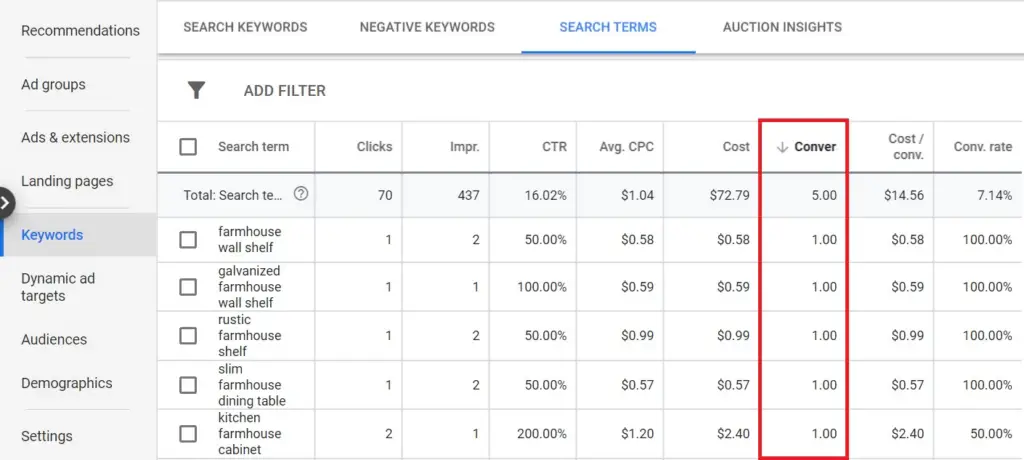
Source: Surfside PPC
Think of your search terms report as a treasure map.
It’s got ‘X’ marks that lead to gold—and some that might lead you straight into quicksand.
What’s the deal with Search Terms?
You know when you toss a bunch of ingredients into a pot, hoping for a gourmet meal?
Sometimes it works; most times, you end up ordering pizza.
The same goes for Google Ads.
Your search terms are those ingredients.
Your ads get triggered by the phrases people type into Google.
So, you better know what’s triggering what.
Peek into your search terms report, and you’ll find invaluable intel on what your audience is actually looking for.
That’s when you can start tailoring your ad groups, keywords, and ads to their specific needs and wants.
A stitch in time…
Remember that quicksand I mentioned?
Enter: negative keywords — the bad apples that could spoil your budget pie.
They’re the words and phrases that are utterly irrelevant to your business but could still trigger your ads.
You’d be amazed how one irrelevant term can siphon off budget like a pirate looting treasure.
Spot these unruly characters in your search terms report and banish them to your negative keywords list.
This will ensure your ads don’t show up for unrelated queries.
Make the most of what you find
Your search terms can become the Swiss Army knife of your Google Ads campaign if used right.
They’re versatile and pack a lot of utility, helping you tweak and hone every facet of your campaign.
Whether it’s improving ad relevance, trimming budget fat, or uncovering hidden gems of keywords, these terms have got your back.
So, dig deep.
Really get your hands dirty in that search terms report.
Be a data archaeologist.
Dust off the dirt and find the gems that can propel your campaign to the next level.
#8 — Boost your ads’ performance with ad extensions

Source: unbounce
Visualise you’re all dressed up in a fancy tuxedo, ready to make a grand entrance at a swanky event.
That’s what ad extensions are like for your Google Ads.
Ad extensions add a touch of class and sophistication, giving your ads that extra oomph to stand out in the crowd.
Ad extensions come in different forms
- Sitelinks are additional links that appear below the main ad and lead to specific pages on your website.
- Callouts are short phrases that highlight key features or benefits of your product or service.
- Structured snippets are additional details about your business.
- Call extensions allow users to call your business directly from the ad.
But here’s the thing: just like a tuxedo, ad extensions need to be worn correctly, or else they’re just for show.
Ask yourself these questions to make sure your ad extensions are doing more than just looking pretty.
- Are you using the right mix of extensions like sitelinks, callouts, structured snippets, and call extensions?
- Are they relevant and up-to-date, providing valuable information to your potential customers?
- And most importantly, are they driving the results you want?
If you shook your head from side to side while reading those questions, you need to take a second look at your ads.
Here are some key strategies to make sure your ad extensions are pulling their weight.
Review the performance data
Just like a master craftsman, you need to know your tools inside out.
Dive into your Google Ads account and analyse the performance data for each of your ad extensions.
Are they driving clicks, conversions, or engagement?
No?
It’s time to rethink your approach.
Analyse your audience
If you want to make your ad extensions work for you, they need to resonate with your target audience.
So, spend some time getting to know your customers, and use this insight to craft ad extensions that speak directly to their needs and desires.
Keep it relevant
Make sure your ad extensions provide valuable, up-to-date information.
It should be related to your business and the products or services you offer.
If your ad extensions don’t add value, they’re just taking up space.
Test and optimise
As with any aspect of digital marketing, success with ad extensions is all about continuous testing and optimisation.
Don’t be afraid to experiment with different formats, messages, and offers.
But keep in mind that you should track the results to see what works best for your campaigns.
Follow these strategies to make your ad extensions more than just a pretty face.
However, I understand that using ad extensions can be a little confusing at first.
But don’t worry, there are experts out there who can help you out.
They’ll be able to guide you through the process and turn your extensions into powerful tools that drive conversions.
#9 — Analyse your competitors to stay ahead of the game
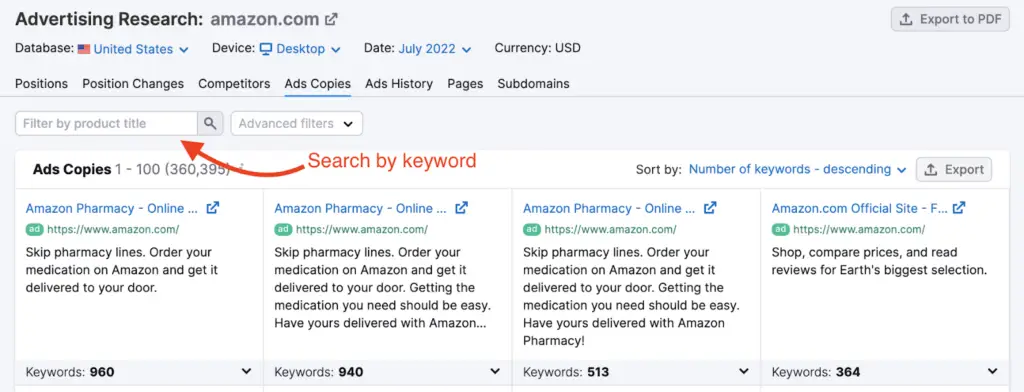
Source: SEMrush
Pretend as if you’re James Bond.
Stealthily gathering intelligence on your arch-nemeses.
That’s what competitive analysis is all about in the world of Google Ads.
Spying on your rivals to uncover their secrets and strategies.
And believe me, there’s much to be learned from keeping a watchful eye on your competition.
So, go ahead and slip into your tuxedo (figuratively, of course) and start studying your competitors’ ads.
Let’s discuss the tools of the trade — the gadgets and gizmos that will help you uncover the secrets of your competitors and give you the upper hand.
SpyFu
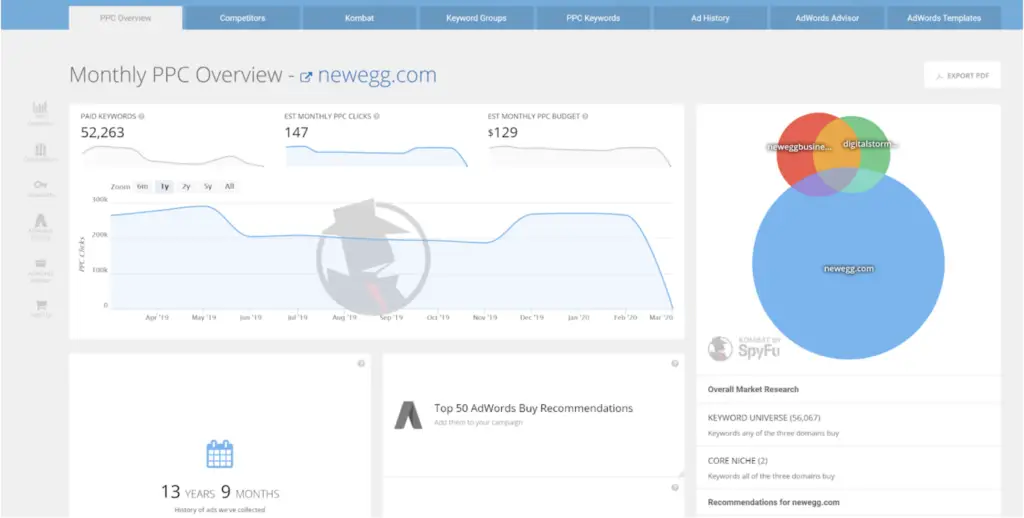
Source: Brafton
Just like its name suggests, SpyFu is all about helping you spy on your competition.
With this tool, you can dig into your competitors’ campaigns.
The best part? You can discover their most profitable keywords, and even analyse their ad content.
Think of it as your very own Google Ads fact-finding mission.
SEMrush
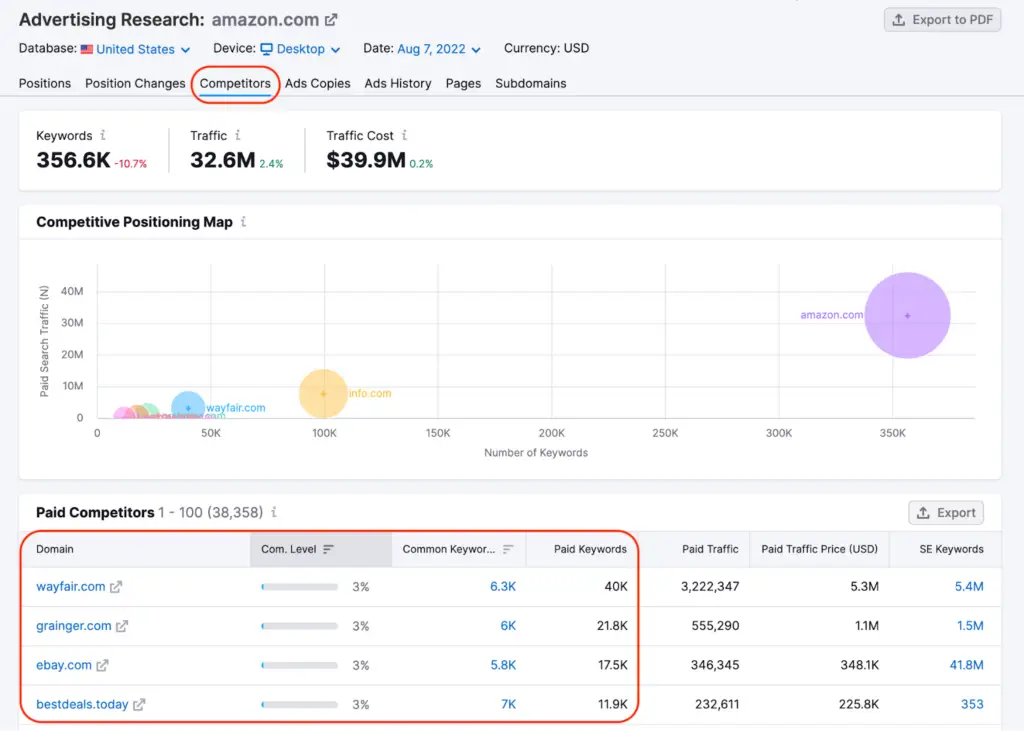
Source: SEMrush
Another powerful ally in your quest for Google Ads domination.
SEMrush offers a wealth of insights into your competitors’ strategies.
From keyword research to backlink analysis, SEMrush is a good tool for gathering intel.
Use these tools to look into your competitors’ ads.
These will help you get inspiration and ideas for your own campaigns to help you stay ahead of the game.
But remember, while imitation may be the sincerest form of flattery, outright copying is a no-no.
Use your newfound intelligence to fuel your creativity.
And then create your own unique and compelling ads that outshine your competitors.
If you stay vigilant and learn from those around you, you’ll be able to navigate the ever-changing landscape of Google Ads.
Remember, as they say in the world of espionage…
“Keep your friends close, and your competitors closer.”
Pull it all together for a successful Google ads audit
We’ve reached the end of our thrilling adventure on how to do a Google Ads audit.
At this point, you’re equipped with a checklist that can turn your Google ads into a successful venture.
Now, I know that facing your fears and diving headfirst into this audit can seem daunting.
But trust me.
Doing a regular Google Ads audit can make a world of difference in your campaign performance.
Still not sure?
If you’re short on time or don’t feel comfortable doing a Google Ads audit, consider hiring an expert to do the hard work for you.
That way, you can rest easy knowing that everything is taken care of by a pro.
Otherwise, happy auditing.
